Brick wall
A loft-style brick wall is a classic. Brickwork can be done in several ways:
- in a brick house, clean the decorative coating to expose the material;
- purchase special decorative tiles to imitate brickwork in a hardware store;
- cut the brick lengthwise into 2-4 parts and decorate with it;
- create a semblance of brickwork using gypsum plaster, sibit, and other materials.
Most often, a brick wall serves as an accent wall; it can be used behind a sofa in the living room, behind the headboard of the bed in the bedroom, or to highlight the dining area in the kitchen. Some people go further and make a brick wall in the area of the kitchen backsplash. In this case, you need to remember that brick is a porous material and needs to be protected with varnish or another dense coating. Don’t forget about the unevenness of the coating – dust will accumulate in all the cracks and protrusions, so it is more difficult to care for it than for a smooth one.
A brick wall of any shade (white, red, yellow, black) goes well with wood, metal, glass. But keep in mind that such a texture is bright in itself and can compete with other finishing options.
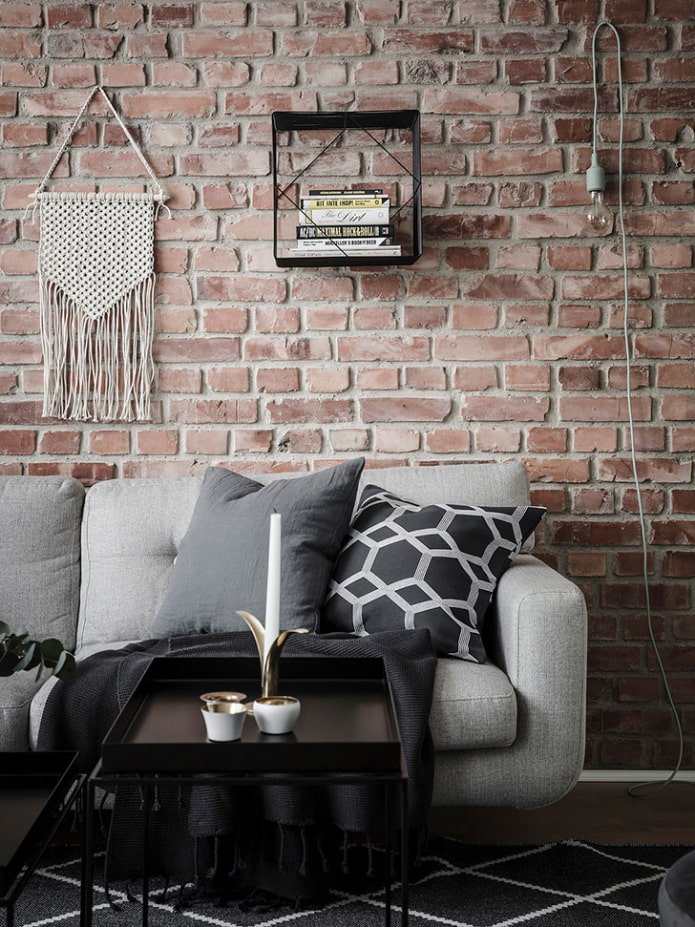

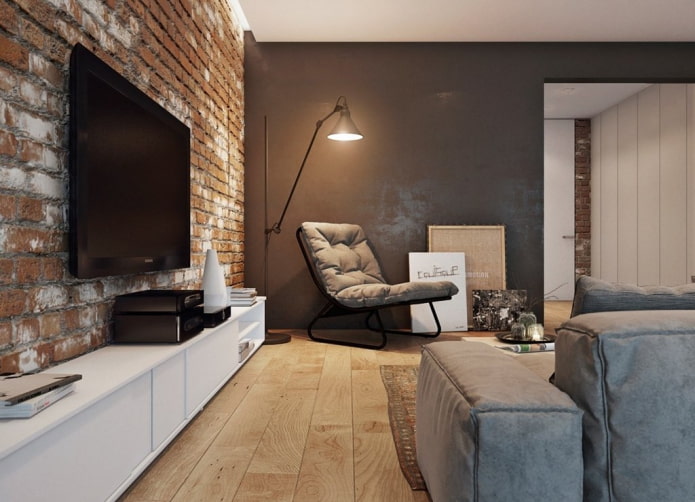
The photo shows bare brick in the living room
Concrete walls
Concrete seems cold and uncomfortable, but this does not prevent it from looking stylish. As with brick, you can recreate a concrete wall in several ways:
- Remove the decorative coating. In ordinary panel houses, slabs are made of concrete, so clean walls will look authentic.
- Decorative coating. Plaster or microcement is an excellent alternative to clean concrete finishing.
- Panels. Tiles, porcelain tiles, wall panels – they look good, are easy and quick to install.
Tip! Concrete can be painted, but it looks best in its natural light gray color.
Bare walls will become an accent in the living room, kitchen, hallway and even the bathroom. But in the bedroom, this option will look uncomfortable, so evaluate the appropriateness of such a covering near the bed in advance.
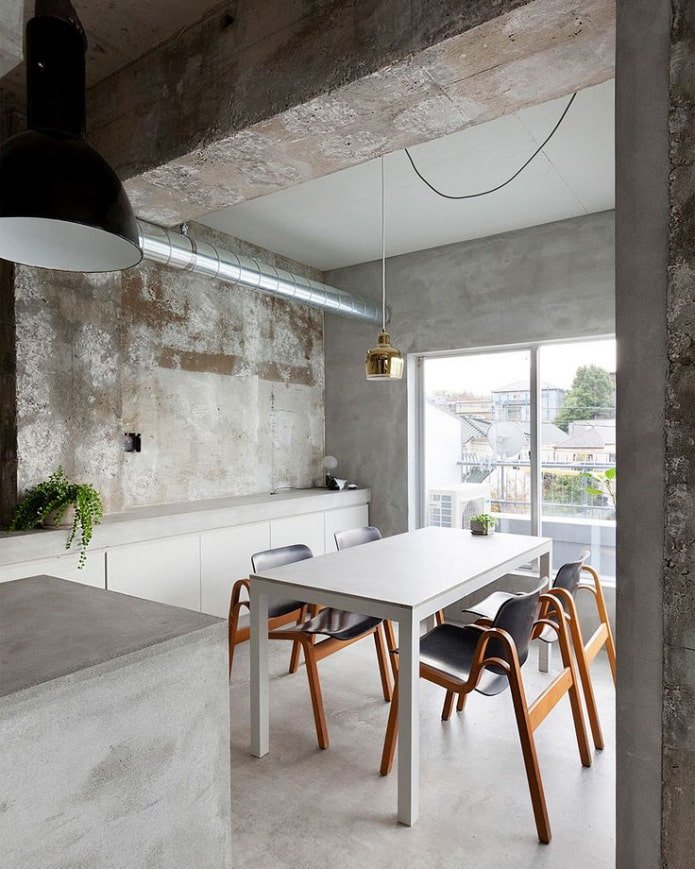

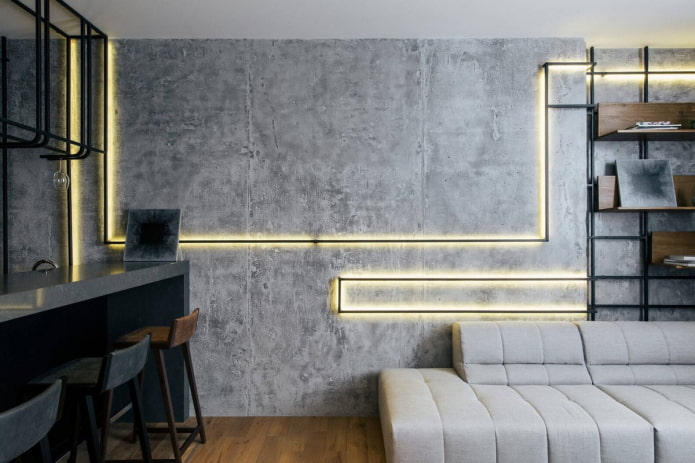
Painting
Paint is a universal material, widely used in all styles. Loft is no exception. Painting allows you to create the most neutral coating, which is good both on its own and as an addition to brick, concrete, wood.
Before painting, the surface does not even need to be prepared for a long time – unevenness and other imperfections will become the highlight of the industrial interior.
Suitable colors:
- white;
- black;
- gray;
- blue;
- green;
- brown.
At the same time, not pure shades are used, but mixed and complex ones: anthracite, cobalt, emerald, umber, copper, bronze.
Advice! Not only smooth surfaces are painted, but also brick, concrete and other surfaces.
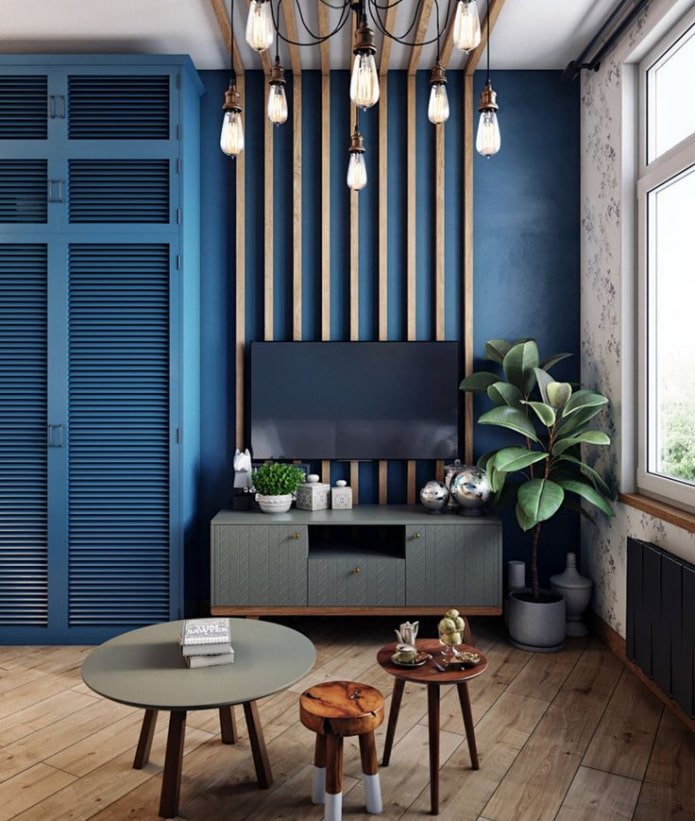

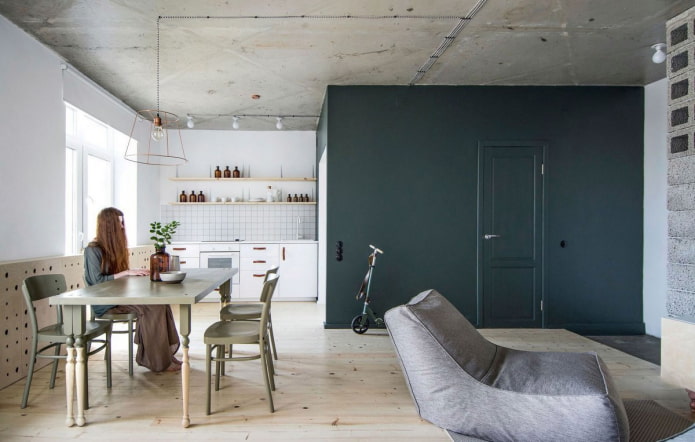
The photo shows a loft studio with painted walls
Decorative plaster
Mineral decorative plaster is relatively inexpensive, easy to use and effective. With its help, you can achieve an interesting effect of concrete, rust, marble, bare walls, metal, even aged wood.
Depending on the effect, plastered ceilings can be either neutral or accent. A combination of plaster and brick is common.
Finishing walls in a loft style using decorative plaster is a simple and quick process. Due to the fact that the surface does not have to be perfectly smooth, even a person without experience can handle the work. The plaster is not afraid of temperature changes, humidity, is easy to clean, and can withstand even aggressive cleaning agents. Therefore, it is used in all rooms: from a dry living room or bedroom to a damp bathroom or kitchen.


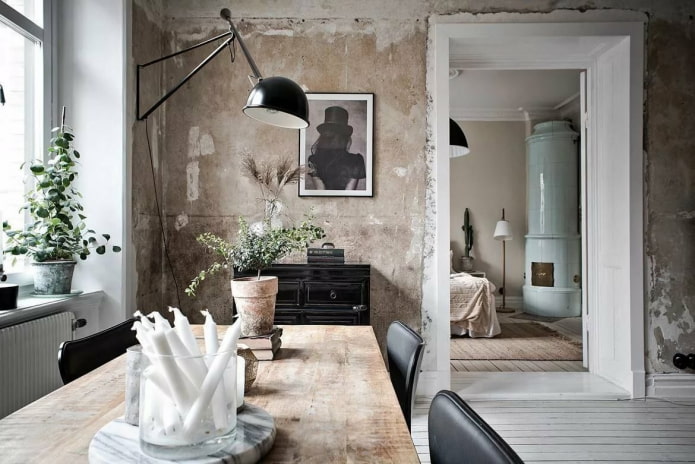
In the photo bare aged walls in the living room
Board
The main difference between wood and other options that can be used to make walls in the loft style is warmth. Boards are much more comfortable than cold concrete or metal, they will add a homely atmosphere to the apartment, make the design more suitable for living.
Wood is used in different ways:
- vertical slats are sent up, going onto the ceiling;
- unedged boards are layered on top of each other, getting the effect of a barn;
- curly panels are created from slats or bars;
- flat boards are installed across, along or diagonally.
For the loft style, the less processed the boards are, the better – therefore, clapboard is used extremely rarely. The ideal option is barn, unedged, scuffed and already used. Or freshly oiled or waxed timber.

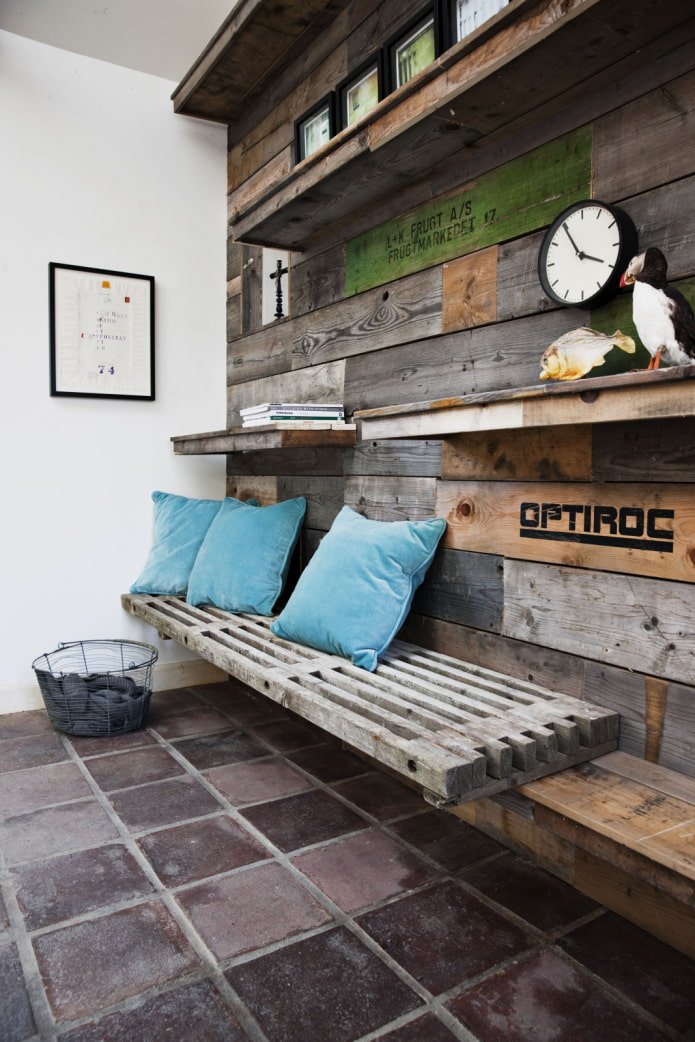

The photo shows an option for using boards in bathroom
Metal
Unlike the modern high-tech style, where metal design is also common, for a loft, the metal needs to be as aged as possible. That is, not new chrome, but with scuffs, covered with rust, and other time marks.
The standard option is cladding with metal panels decorated with rivets. An entire iron wall will look excessive, but it is an excellent loft solution for highlighting a certain area:
- a protruding part with a TV;
- a kitchen apron;
- the space behind the headboard of the bed;
- a dressing area in the hallway.
Iron combines with all textures of the loft style: other metal, wood, brick, concrete.
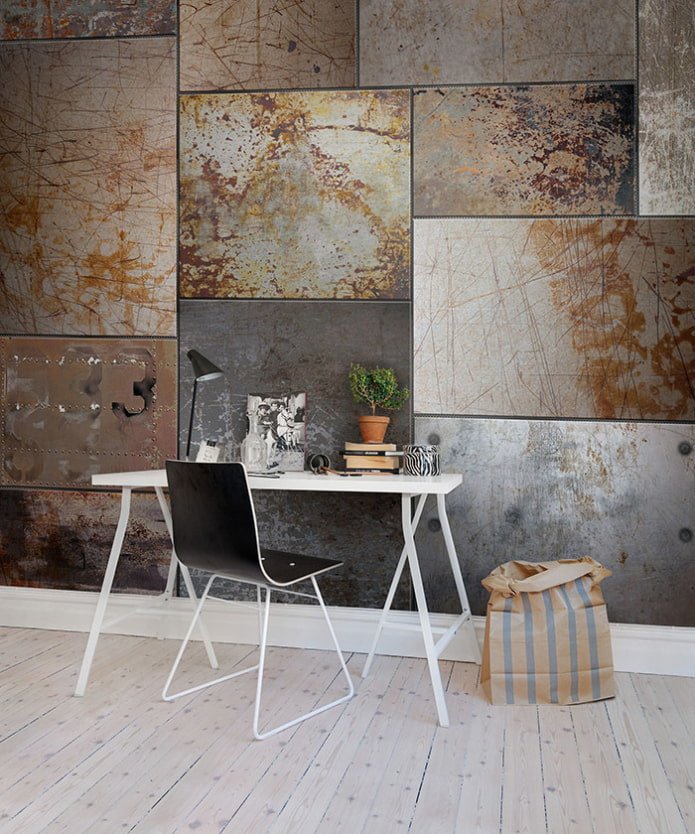
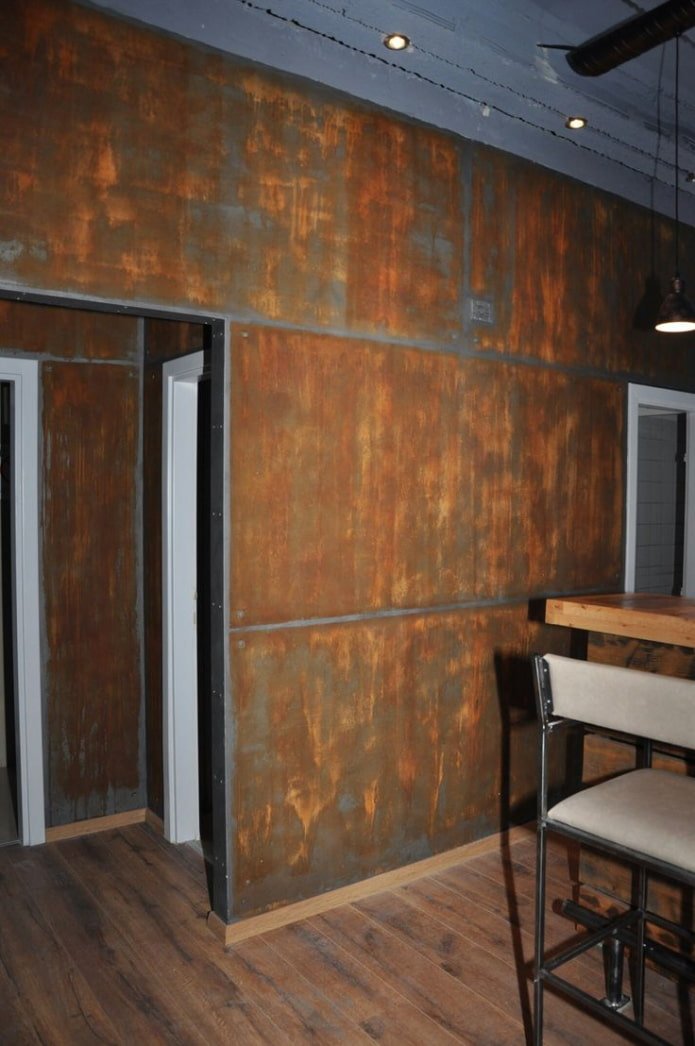
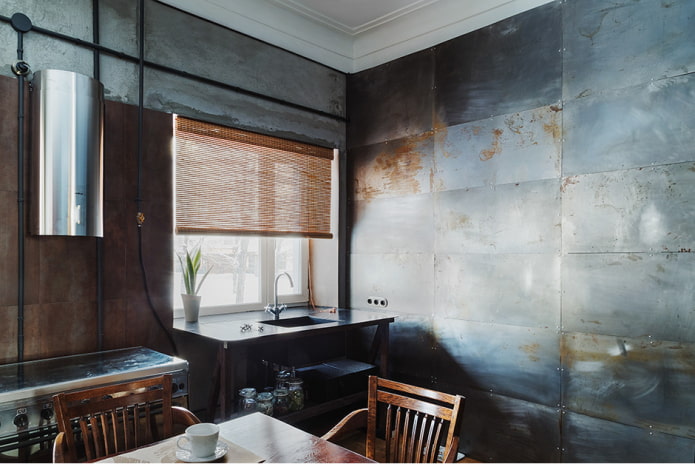
Glass
It’s hard to imagine glass panels on the entire wall: it’s expensive and completely unnecessary. But protecting, for example, an apron in the kitchen or bathroom with skinals is just the thing. Transparent glass does not hide the texture, but makes it easier to clean the walls.
However, glass is more often used to make independent partitions. Because Industrial space is usually open, zoning with such airy structures is simply necessary. For this purpose, walls are made of black metal and glass – they can be in the form of screens or full-fledged walls with doors.
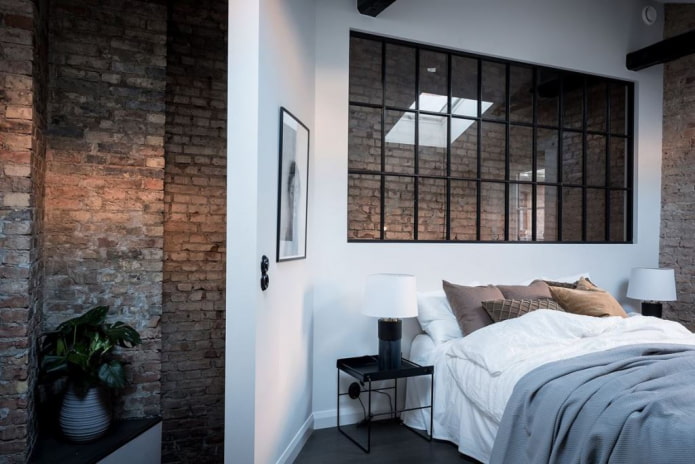
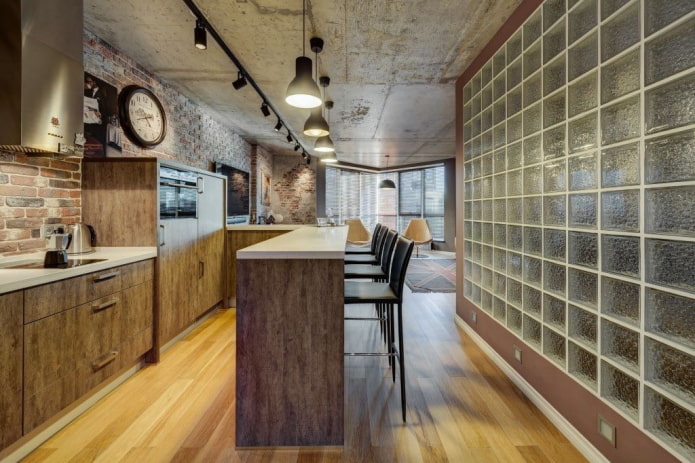
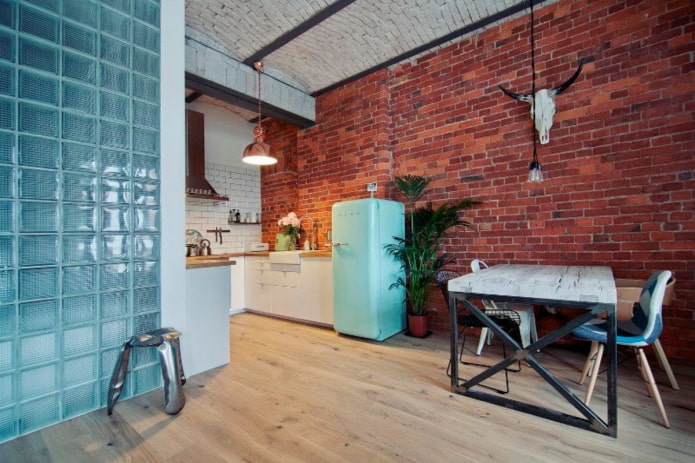
The photo shows finishing in an apartment with glass blocks
Tiles
Since the loft style is gaining momentum and is a favorite trend among young people, manufacturers offer many options for its implementation. Ceramic tiles are no exception. For industrial design, tiles or porcelain tiles with a texture are suitable:
- wood;
- aged brick;
- concrete;
- metal;
- plaster.
Choose a matte texture, under the old. Too glossy white boar, for example, will stand out from the overall concept. And imitation of chips and scratches on gloss, on the contrary, will fit well.
It is permissible to use not only textures, but also patterns. The most suitable print would be geometric, but Moroccan patterns will also work.
Ceramics are used to decorate kitchens, bathrooms, and utility rooms (like boiler rooms).

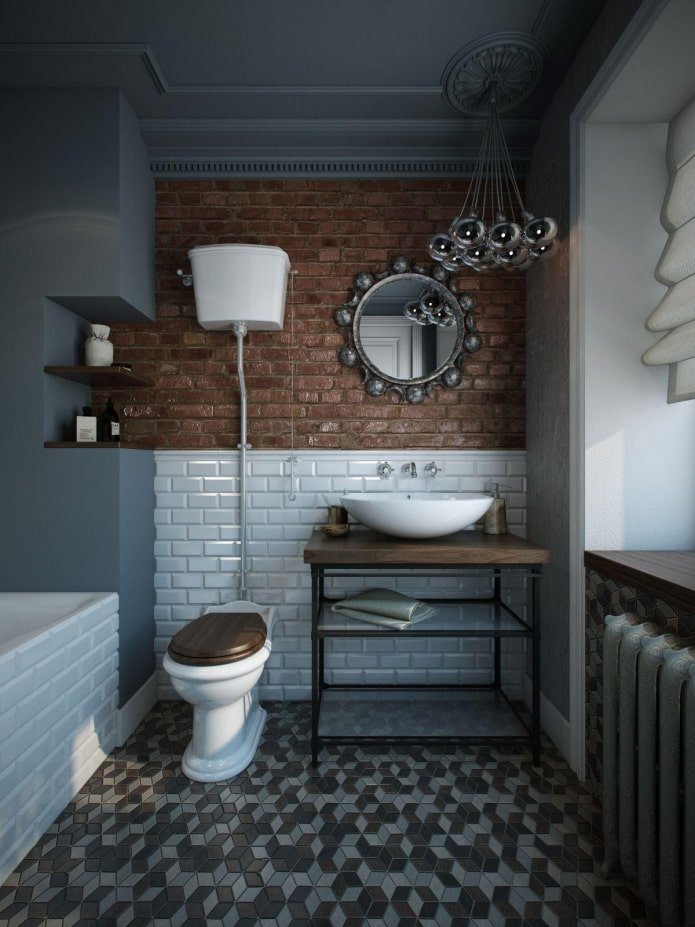
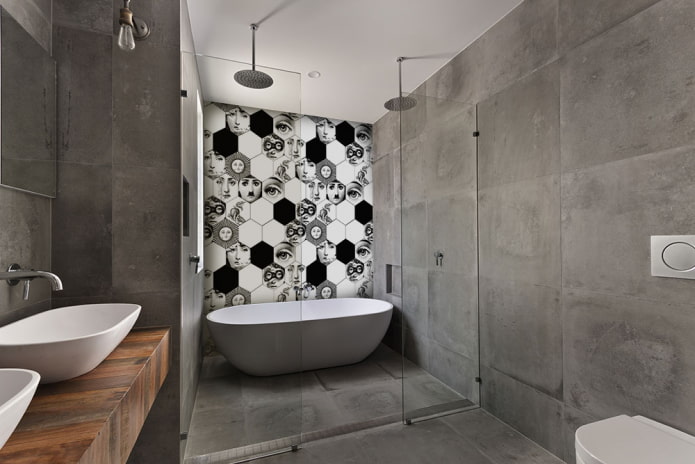
Unusual ideas
What other materials are used to finish walls in the loft style? In general, any, the main thing is that they have a suitable texture.
- Laminate. An excellent alternative to boards. Easy to install, clean, withstands heavy loads.
- Chipboard. These are usually used for floors, but if the surface imitates colored boards, they look great in a vertical position.
- Wallpaper. In stores, you can find plain canvases for plaster or painting.
- Plywood. Another slab alternative to wood. The main rule is not to overdo it, so as not to get the effect of a bathhouse.
- Chalkboard paint. Black, matte, you can draw on the surface with chalk – a great source of inspiration.
- Airbrushing. Drawings on the walls, made in any technique, enliven the interior of the house, make it individual.
Now reading:
- Gold Wallpaper in Design: 60 Best Examples and Inspiration for Interiors
- ways to use geotextiles in the country that will be useful for every gardener.
- French curtains: more than 70 photos and unique ideas for your interior.
- Discover the Versatile Ford Galaxy Vehicle
- Insulation of the floor in a private house with LOGICPIR thermal panels: advantages and installation instructions.